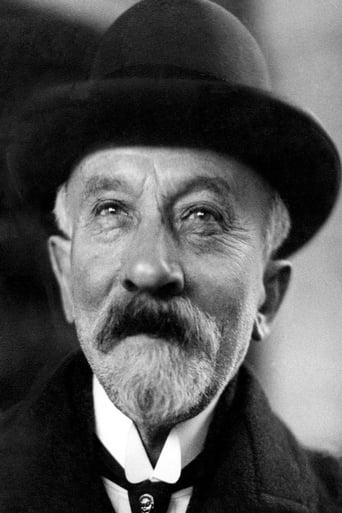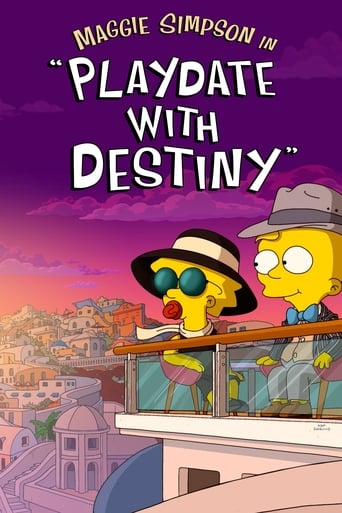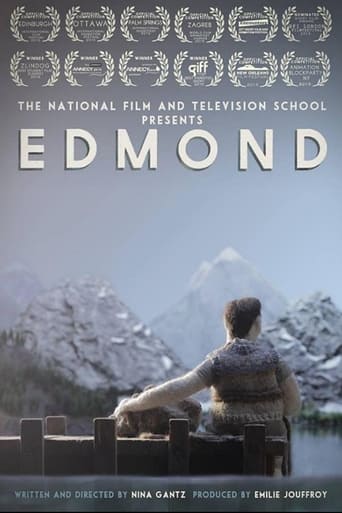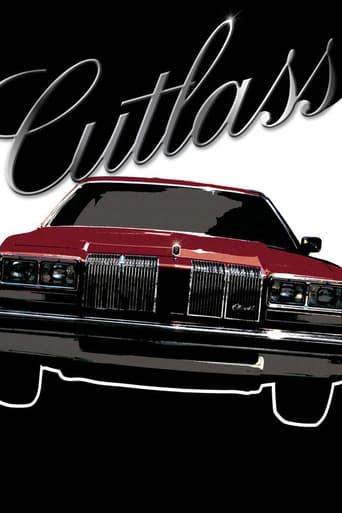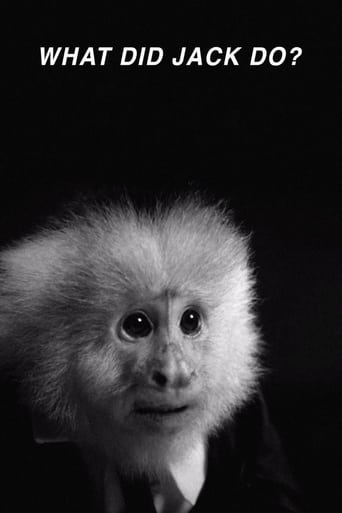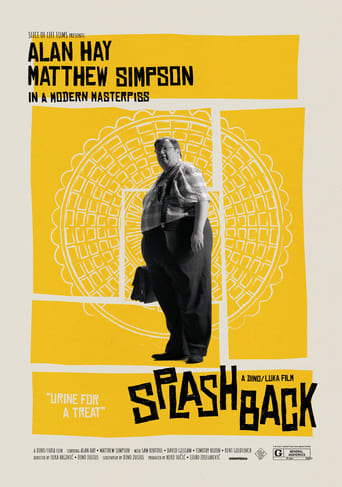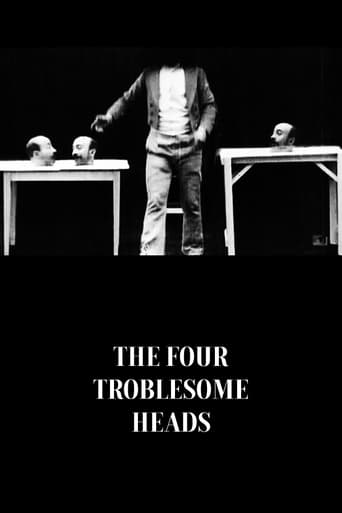

The Four Troublesome Heads (1898)
One of the greatest of black art pictures. The conjurer appears before the audience, with his head in its proper place. He then removes his head, and throwing it in the air, it appears on the table opposite another head, and both detached heads sing in unison. The conjurer then removes it a third time. You then see all three of his heads, which are exact duplicates, upon the table at one time, while the conjurer again stands before the audience with his head perfectly intact, singing in unison with the three heads upon the table. He closes the picture by bowing himself from the stage.
Watch Trailer
Cast
Similar titles

Reviews
Best movie ever!
Although it has its amusing moments, in eneral the plot does not convince.
The movie's neither hopeful in contrived ways, nor hopeless in different contrived ways. Somehow it manages to be wonderful
Let me be very fair here, this is not the best movie in my opinion. But, this movie is fun, it has purpose and is very enjoyable to watch.
Georges Melies was a stage magician before turning to film, so it's no surprise that he plays a stage magician. But in his films, Georges does what no stage magician could possibly do.In "Un homme de tete", Melies repeatedly takes his head off and grows a new one three times, then gets out a banjo and sings a quartet with bodyless selves. The fluidity and aplomb with which he performs is nothing short of remarkable.While many early films are primarily interesting for their historical value, Melies' transcend mere museum pieces. Like Buster Keaton's silent films, they are timeless and retain their charm -- in this case, well over 100 years later.
I must agree with Méliès' granddaughter's description of this film. While there isn't really a plot, the film exudes pure genius in its construction. Although it looks like a single 55-second scene, the film actually combines dozens of snippets of performances and does so amazingly fluidly. The effects in this film could easily be done today using computer graphics, but would have been difficult to achieve before the 1990's. And yet Méliès was able to pull them off almost a century before that.Although Méliès would later go on to produce some dramatic films, the most famous being his "Trip to the Moon", the pacing and energy of his later works generally fall far short of what he exhibits here. Further, while many of his later films have at least some noticeable mismatch edits or other problems, his technique on this film is perfect. Absolutely amazing.
In December of 1895, the Lumière brothers began the first series of screenings of their "moving pictures" starting with this the history of cinema as a form of entertainment. Among those first impressed by the magic of motion pictures was a man who differed from the Lumière's idea of using cinema only for scientific purposes, the stage magician Georges Méliès. Story says that the very day he watched a movie for the first time, Méliès bought a Lumière cinematographer to do his own movies as he discovered the potential of movies as an art form. Like all the early pioneers, Méliès started with short documentaries, but quickly he put in practice his idea of using the invention to tell stories. His continuous experimentation took him in 1896 to the discovery of many special effects where he was finally able to "transform reality" in his movies. The amazing "Cinemagician" had arrived and with him, cinema as a narrative art had been born.1898's "Un Homme De Têtes" (Literally "A man of heads", but better known as "The Four Troublesome Heads") is one of the earliest surviving films done by Méliès, and while not as well known as his posterior work, it already shows the amazing talent that the magician had as a creator of special effects. As many of his earliest movies, "Un Homme De Têtes" is basically a short movie where he shows a magical trick impossible to achieve in real life. In this case, a magician (Méliès himself) appears on stage, and removes his own head with magic, putting it in a table next to him. Suddenly, another head appears over his shoulders and the head on the table begins to sing. The magician repeats the trick until he has three heads on a table besides his own, and now he has four singing heads to perform a song.Barely with little less of a minute of duration, "Un Homme De Têtes" is a wonderful display of Méliès' talent with special effects, as with a mixture of prosthetics, dissolves and multiple exposures he achieves a very lively representation of his magic. While for today's technologies this little trick is pretty easy to achieve, it is a remarkable achievement for early film-making, as the "gimmick" surprisingly looks very real and still is very effective despite being over 100 years old. The way Méliès conceived the trick is also worthy of praise, as the movie feels very fluid and the necessary cuts for the trick are done very smoothly. As with most "gimmick films", there is no plot other than a magician performing his act as if it was a theater presentation, however, Méliès makes a very charming performance as the magician that adds a lot to the movie's atmosphere of being in a circus.French director Georges Méliès is definitely better remembered for his early fantasy films like his version of "Cinderella" ("Cendrillon") or his famous "A Trip to the Moon" ("Le Voyage Dans la lune"), movies where not only he showed wonderful special effects, but also a brilliant narrative skill and a vision for set designs. However, it was with films like "Un Homme De Têtes" where everything started, and when one compares Méliès' early work with the early films of other pioneers, one can see who was truly the superior filmmaker at the time. Definitely one of the early masters of cinema, Georges Méliès' work is one of clever tricks, enormous imagination and true magic, as he was probably the first person who knew that cinema was the factory of dreams. After all, he was not called the "Cinemagician" for nothing. 7/10
The Four Troublesome Heads is the first and earliest short shown in a fifteen short compilation called Melies Magic Show on an Arte Video DVD called Melies the Magician. It's basically Georges taking off his head three times, putting two on the table to the right of him and one on the table to the left. He then sings with the three heads. The end. Hardly much today but must of charmed audiences back then since this was the first time split screen was used and three times no less! Melies would eventually become a pioneer of various special effects that he would use again and again to great acclaim throughout France and the world. It's him that we owe for bringing fantasy to motion pictures. So if you're a Melies fan who hasn't seen his earliest works, seek this one out by all means.
